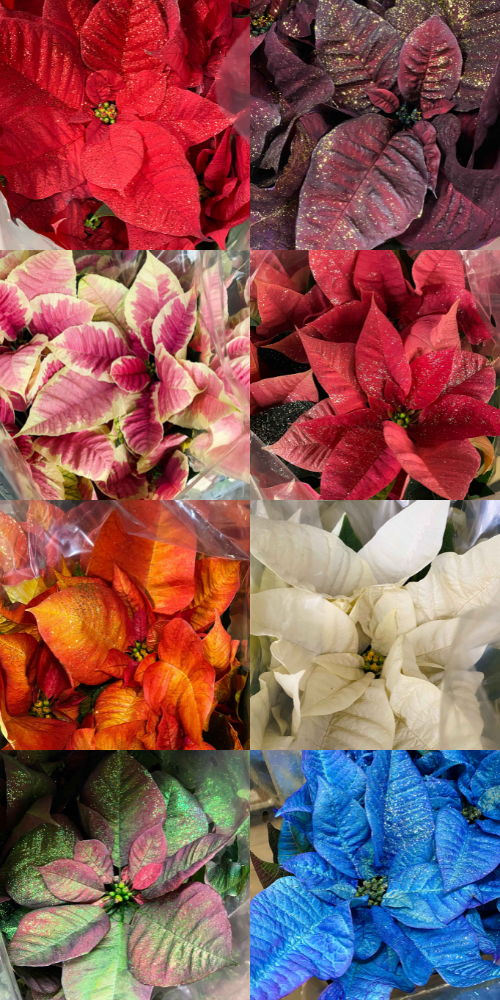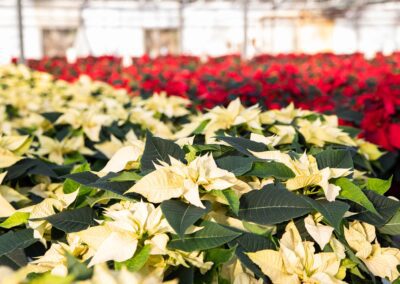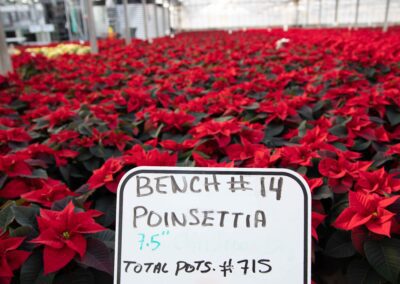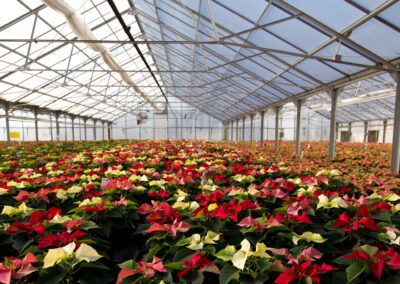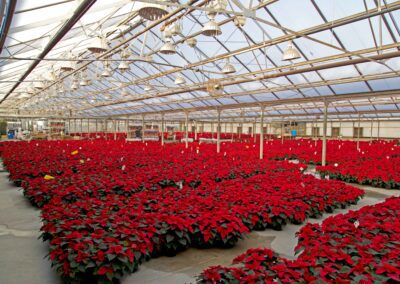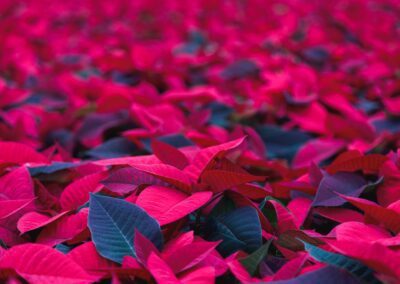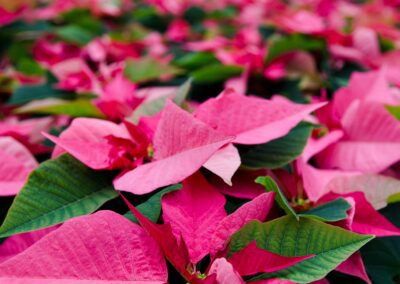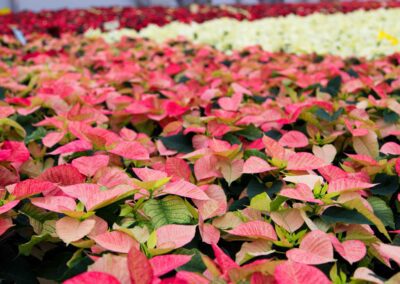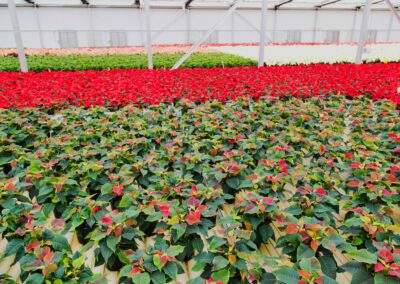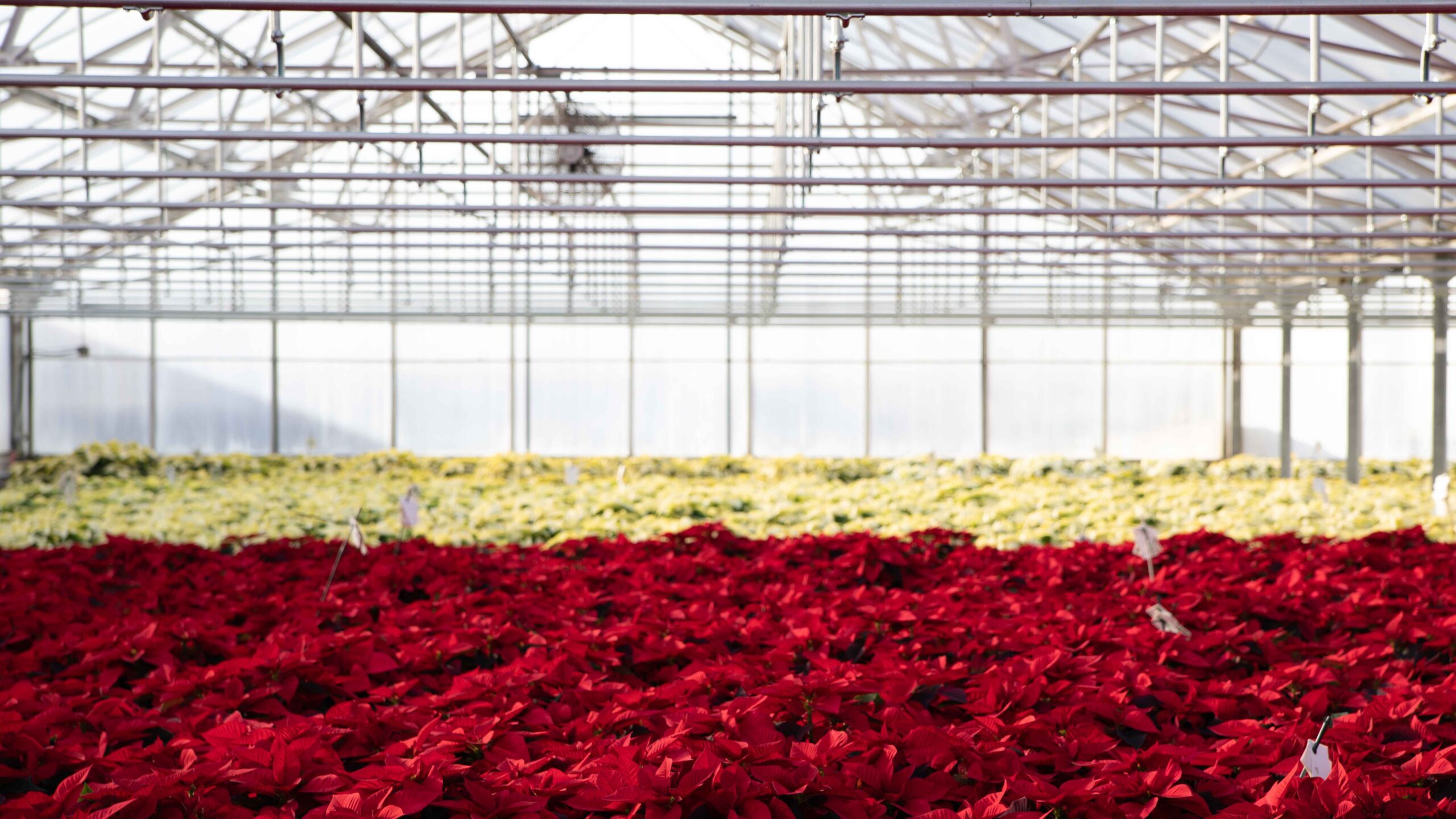
It’s the holiday season at Len Busch Roses! What better way to welcome back the holidays than to welcome you to check out our poinsettias! Growing this iconic plant is a detailed, 26-week-long process that is revisited every year to ensure a beautiful and reliable product to be sent to our customers.
The process restarts immediately after last year’s product has been sold. The coming year’s crop is ordered in January and every detail must be accurately predicted. From variety to the amount of product purchased, the success and demand of the coming year’s poinsettias need to be considered and guessed from afar.
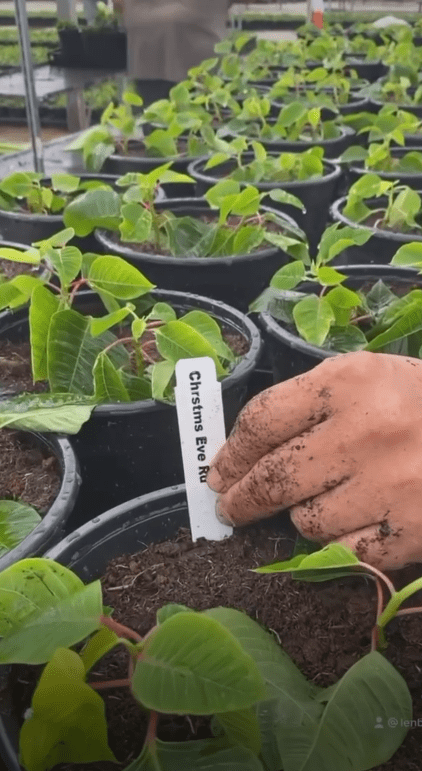
The vendor of our poinsettias begins growing in May. We take over the process in June when we receive seeds implanted in small foam plugs. The bigger seedlings are planted immediately, while smaller seedlings can be put off until July. Using an automated machine, known as the “robot,” LBR employees place seed plugs into larger pots. The machine rotates the pots in a circle, and one seed plug is placed into the middle of each pot. After the seed is placed, the pots are moved onto a tray and sprayed with water before being transferred to their greenhouse resting place where they will spend their next few months.
In the greenhouse, the way poinsettias are grown is closely monitored. Counting 6-8 leaves up the stem, the plants are “pinched” to prevent them from growing straight up. The pinching will help to create a fuller, more desirable v-shaped poinsettia. Spacing the plants within their trays also helps to encourage fuller and more shaped growth. Using the LBR developed spacing technique, trays begin with 250 plants. As they grow, trays are downsized to 132 plants per tray, and eventually 64 when the poinsettias reach their largest.
Poinsettias are very light-sensitive plants. The plants bloom as the days get shorter, hence why they are in bloom during the winter months. In order to have the plants ready and blooming in time for the holiday season, they need to be tricked into darkness. Once trays reach their “shade date,” they are transferred into a shaded greenhouse where natural light is restricted, forcing the poinsettias to receive less daylight than they had inside their previous non-shaded greenhouse. If the plants need to be delayed in their growth, they are similarly placed back into an environment with more daylight.
Once the poinsettias are fully grown and bloomed, the harvesting process can begin. Although the classic red poinsettia is the most popular variety, Len Busch Roses also paints and glitters poinsettias. To do this, a plant handler stands on a platform equal to the height of the tray and uses an air sprayer to paint on top of the canvas that is the original white poinsettia’s leaves. If the plant is to be glittered as well, glue is similarly sprayed on after the paint dries, and promptly sprinkled with glitter. Plants are matched with their correct pot covers and sleeves and are then ready for purchasing.
We grow as many poinsettias as can fit in our own greenhouses, and we purchase any existing deficit. The salespeople are informed of how many poinsettias are available to our customers, and the plants are harvested based on what’s shipping that exact day. Len Busch Roses produces over 100,000 poinsettias every year, and we take pride in bringing the holiday season into the shops and homes of our customers!
Written by Peyton Lenz
